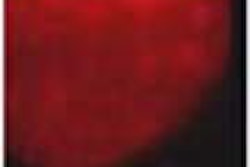CHICAGO – The addition of computer-aided detection (CAD) to double reading can decrease false negative mammograms by as much as 87%, according to a study from The Elizabeth Wende Breast Cancer Center in Rochester, NY. Dr. Stamatia Destounis discussed the results at the RSNA meeting on Wednesday.
The Wende center performs 60,000 mammography exams per year -- 45,000 routine screenings and 15,000 diagnostic exams. All mammograms are consensus-double read by five radiologists at the freestanding clinic, Destounis said. When a cancer is detected and biopsy-proven, the mammogram is reviewed to determine if the cancer was visible in retrospect. The mammograms are then classified into three categories:
- no evidence of cancer
- visible cancer that at least three of the five radiologists judged below the threshold of action
- evident cancer with at least three out of five radiologists agreeing that further action is needed
"Double reading has been shown to reduce the false-negative rate, and CAD has been shown to increase the cancer detection rate in single reading," Destounis said. "Our goal was to determine the usefulness of CAD in the setting of the double reading."
The study looked at 519 biopsy-proven cancers detected on mammography, 15% of which were deemed actionable upon review of the first mammogram. These cases were then analyzed with CAD (ImageChecker 2.2, R2 Technology, Los Altos, CA). The CAD output was scored as correct if it marked the location of the lesion on the mammogram.
Of the 78 actionable cancers, 76% were masses or architectural distortions, 14% were microcalcifications, and 10% were masses with microcalcifications. CAD correctly marked 87% of the mammograms previously deemed negative by the radiologists.
Of the 241 CAD marks, 36% were accurate for cancer, Destounis said. The system also found all three cases of lymph node metastases, which had been missed by the radiologists on the first read, she added.
While using CAD did result in a drop in the false-negative rate, it increased the reading time to essentially a triple read. However, "in the beginning, we were trying to outguess each other and the CAD. It takes awhile to get used to the CAD. But because we’ve always double-read, it still takes extra time," Destounis said.
The solution to shorter reading times may lie with CAD itself, which could serve as an alternative to double reading. According to another presentation by Dr. Rachel Brem from George Washington University Medical Center, using CAD resulted in a 21.2% relative increase in a radiologist’s sensitivity in the detection of breast cancer.
For this multicenter retrospective study, 403 mammograms underwent blinded review by three radiologists. Work-up was recommended in 332 cases, of which 175 were confirmed to be a missed cancer, Brem said. The Second Look (CADx Medical Systems, Quebec, Canada) evaluated all 175 missed cancers.
According to the results, 121 additional cancer cases could have been found by the radiologists for a sensitivity of 77% with CAD. Of these 121 cases, CAD correctly identified 66%. The sensitivity rate for the radiologists using CAD was 93%. The study concluded that there was a 21% increase in sensitivity with CAD, compared with the 5% to 15% increase generally associated with double reading.
By Shalmali Pal
AuntMinnie.com staff writer
November 28, 2001
For the rest of our coverage of the 2001 RSNA meeting, go to our RADCast@RSNA 2001.
Copyright © 2001 AuntMinnie.com



















